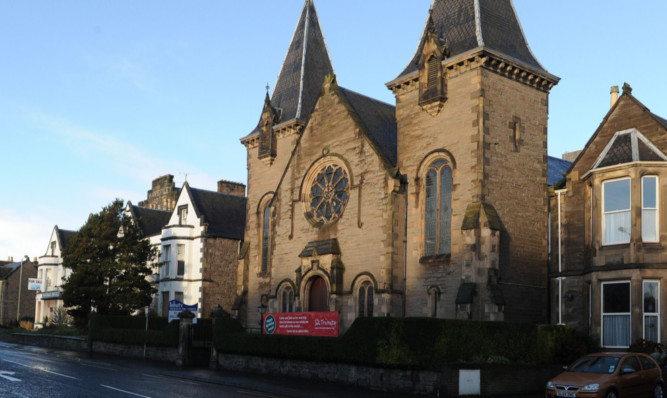Historic Scotland is refusing to support plans by one of the country’s richest women to demolish a Perth hotel building.
The Waverley, in York Place on the edge of the city centre, has stood empty since it closed its doors more than four years ago.
Now leading businesswoman Ann Gloag wants to tear down the building and create a new hall and gym for the adjacent Trinity Church of Nazarene.
Ms Gloag hopes the extension will help the church to cope with its swelling congregation whose members include Ms Gloag and her brother, Stagecoach boss Brian Souter as well as offer facilities for the wider community.
But The Courier can reveal that the plan is under fire from Historic Scotland, the same government agency which is opposing long-standing plans to demolish Perth City Hall.
The heritage body has written to planning officers at Perth and Kinross Council, arguing that developers have failed to proof their case for knocking down the 19th century hotel.
Senior heritage management officer Michael Scott said: “We remain unconvinced that all efforts have been made to incorporate the listed building and we are not satisfied that adequate justification for demolition of the listed building has been clearly demonstrate … therefore, there is no overriding case for total demolition.”
Mr Scott said he does not doubt the community benefits of the plan but adds that the church has not demonstrated that there is “no practical way of realising these benefits without demolishing the listed building”.
The Architectural Heritage Society of Scotland has also lodged a formal objection to the proposal.
In a statement to the local authority, a spokesman said the two villas which make up the hotel “are critically visually important at this busy and significant crossroads.”
He added: “The proposed development is an excessively bland replacement, an escapee from the 1960s, and is completely inappropriate for the role which it ought to play in the historic townscape.
“Even the retention of the villa faade would be preferable to the large and ugly hall.
“It is agreed that action is needed but total site clearance for such small return should not even be contemplated.”
A similar plan to demolish the hotel was submitted in May 2013 but was withdrawn. The building was put on the market last January but failed to attract sufficient interest from potential buyers.
As a result, the fresh proposal was put together by Denholm Partnership Architects on behalf of Bonard Leasing LLP, of which Ms Gloag is a director.
In a design statement to council chiefs, the architects argue that the hotel is of no architectural merit.
A spokesman added that the church building would be at risk if the congregation was forced to move out to an alternative site.
“The church is the more significant of the buildings in this part of the townscape and the proposed demolition the neighbouring property will enhance the setting and secure the future use of the existing church,” he said.
“This is a successful and growing community church, with a ministry based in and focused on the city centre.
“The church has made a commitment to expand its programme to meet identified social and community needs in the city centre.
“For the church to continue to succeed in this way, it is essential that any new facility is on site and adjacent to the church.”
